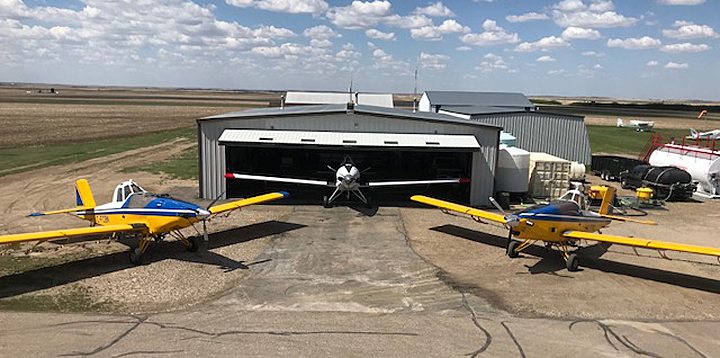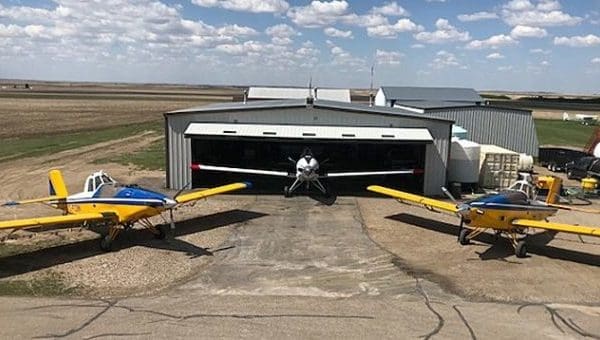
Kindersley Airspray has been chosen to supply planes and pilots to help with firefighting operations this year.
Jamac News Services
Kindersley Airspray’s fleet of Thrush 510Ps can carry 510 gallons of water or foam and may be put to good use this dry summer.
Wildfires in the West Central Region may see a quicker response from the air by a local aerial application company, thanks to a provincial government initiative to contract six such operators to provide assistance this fire season.
Kindersley Airspray’s headquarters is in Kindersley, and they have bases in Eatonia, Eston, Herschel, Luseland and other communities around the region. While a normal day consists of skimming several feet above crops, owner Colin Bevan’s staff is trained to do the same over any fire, and some of his pilots have been previously actively controlling fires in Australia.
[emember_protected for=”2″ custom_msg=’For more on this story, please see the May 23 print edition of The Clarion.’]
“We have five aircraft, and they are all capable of assisting in battling wildfires. Most of our pilots have taken the training, some of them still have to do that, but we have enough staff here that we are able to be available for the 2018 season.”
Bevan’s fleet consists of three turbine Thrush 510P’s. Each is capable of carrying 510 gallons, a radial Thrush S-R2 which holds 400 gallons, and a 400 Piper Brave that can hold 270 gallons.
“Water and foam are what will be dropped on the fires, we are not certified to drop any kind of retardant, which is usually used in British Columbia or areas where they have those types of fires.”
Manoeuvres in the air are similar to those used in aerial application, but co-ordinating with everyone else battling the fire is important, which has been emphasized in the training received by the pilots.
“Communication is the key with emergency services crews on the ground. We have to make sure we are on the same wavelength, so we both understand where we’re supposed to be dropping the water. There’s going to be on going recurring training with emergency services as time goes on, so that things should run smoothly.”
Using a smaller aircraft to do the job has its benefits, such as faster response time and quicker access to the scene.
“There have been grass fires in the area over the years and if we were called out, we could have been there and dropped water on it within half an hour. Previously, with the bigger planes up north, it would have taken half a day to get them down to this area. We have the ability to access water runs and ravines that ground crews can’t access in a timely fashion.”
While crop duster pilots often have the convenience and skill set to land on a grid road to fill the tank, Kindersley Airspray’s units will still use actual runways. The ability to work off of smaller airports is to their advantage. There are some grass strips that they do ag jobs off of that they could use for these operations as well.
“We are excited to being a part of this program, and glad to be involved with the communities and able to offer any support that we can,” said Bevan.
[/emember_protected]

